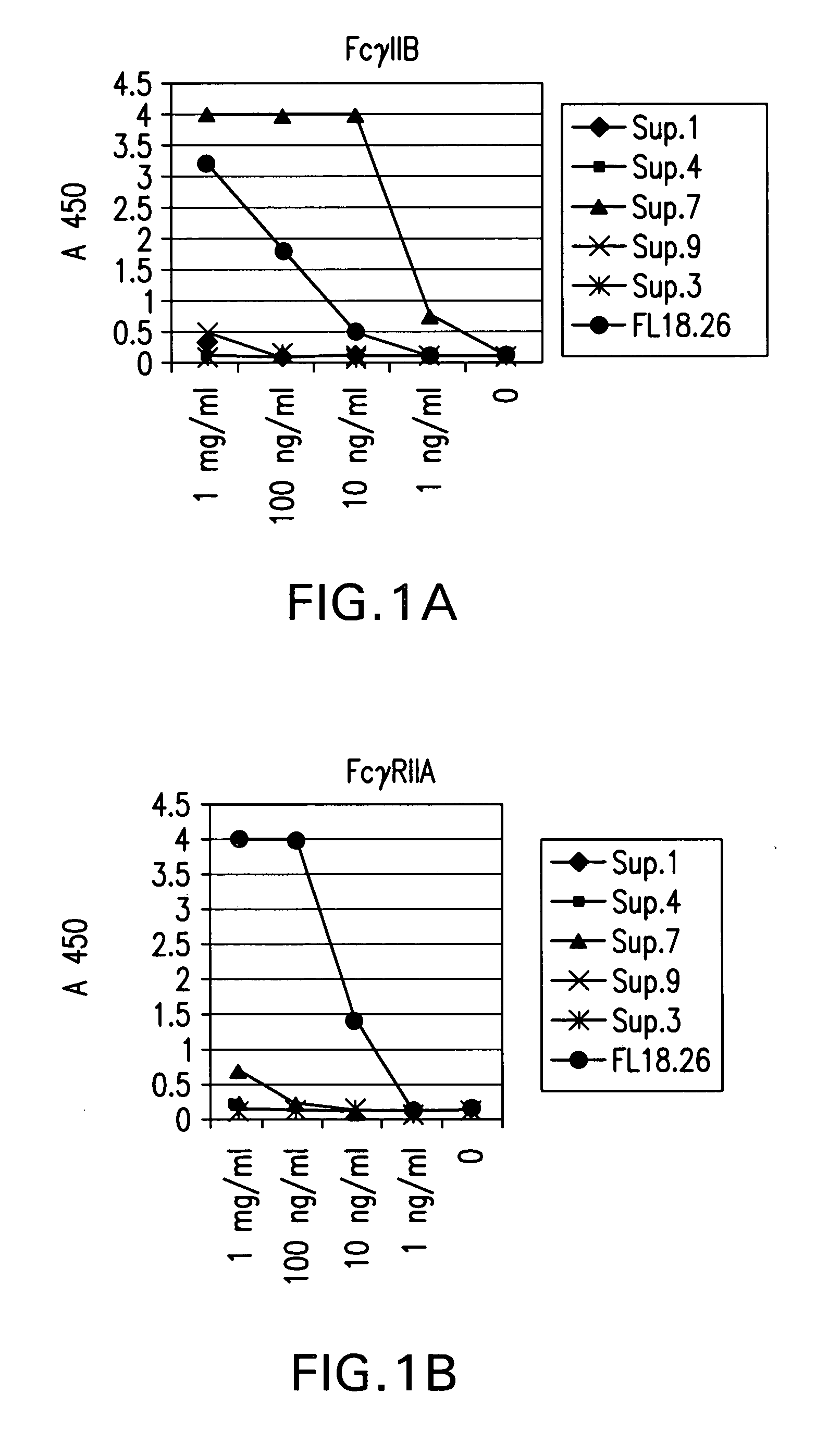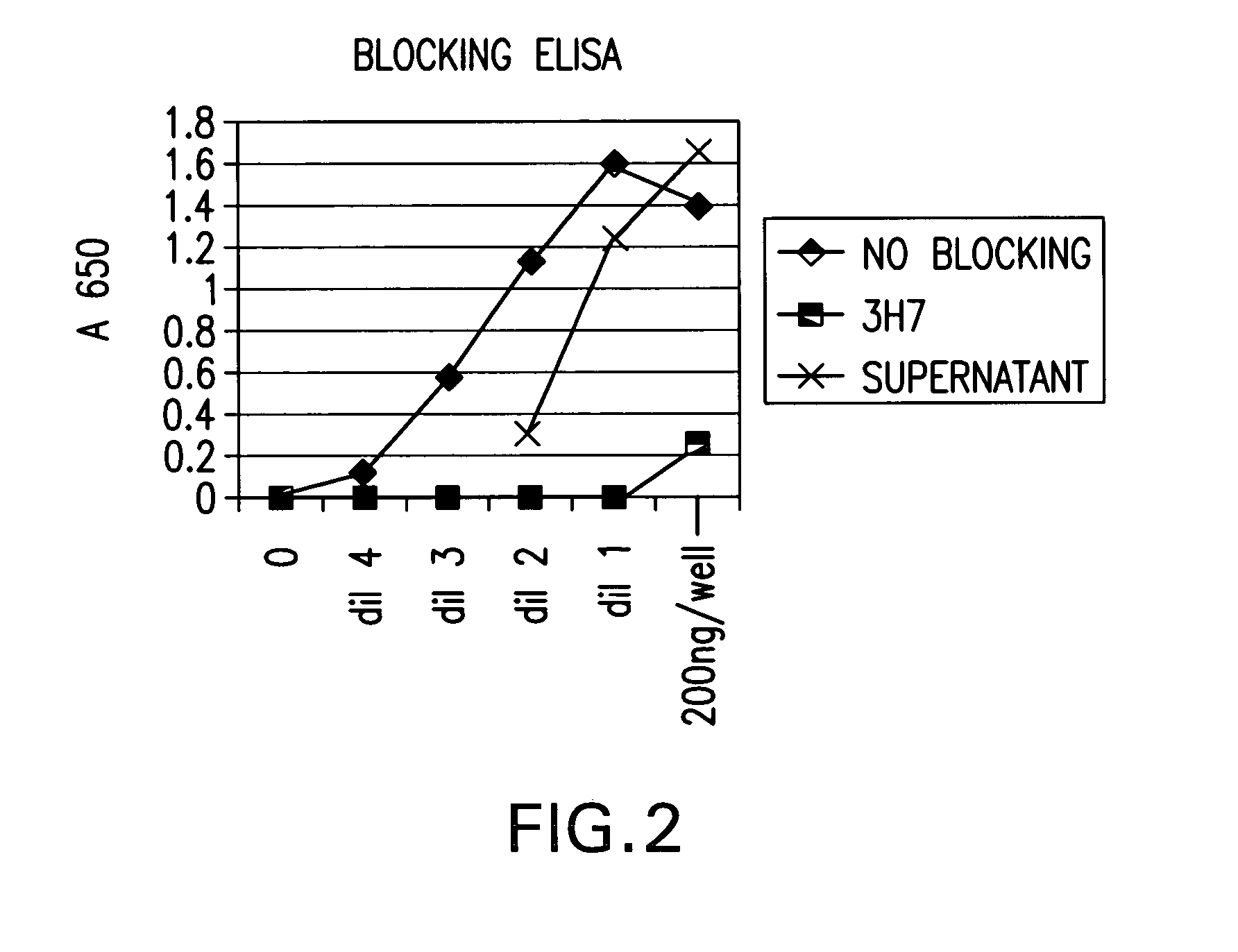Fcgamma riib specific antibodies and methods of use thereof
a technology of specific antibodies and antibodies, applied in the field of fcgamma riib specific antibodies, can solve the problems of increasing the damage, increasing the damage, and increasing the damage of the antibody, and achieve the effects of potentiating the antibody's therapeutic activity, and enhancing the antibody-mediated effector function
- Summary
- Abstract
- Description
- Claims
- Application Information
AI Technical Summary
Benefits of technology
Problems solved by technology
Method used
Image
Examples
Embodiment Construction
[0137] 5.1 FcγRIIB-Specific Antibodies
[0138] The invention encompasses antibodies (preferably monoclonal antibodies) or fragments thereof that specifically bind FcγRIIB, preferably human FcγRIIB, more preferably human native FcγRIIB with a greater affinity than said antibodies or fragments thereof bind FcγRIIA, preferably, human FcγRIIA, more preferably native human FcγRIIA. Preferably the antibodies of the invention bind the extracellular domain of native human FcγRIIB. In certain embodiments, the antibodies or fragments thereof bind to FcγRIIB with an affinity greater than two-fold, four fold, 6 fold, 10 fold, 20 fold, 50 fold, 100 fold, 1000 fold, 104 fold, 105 fold, 106 fold, 107 fold, or 108 fold than said antibodies or fragments thereof bind FcγRIIA. In one particular embodiment, the antibody is a mouse monoclonal antibody produced by clone 2B6 or 3H7, having ATCC accession numbers PTA-4591 and PTA-4592, respectively. Hybridomas producing antibodies of the invention have been...
PUM
| Property | Measurement | Unit |
|---|---|---|
| concentrations | aaaaa | aaaaa |
| molecular weight | aaaaa | aaaaa |
| molecular weight | aaaaa | aaaaa |
Abstract
Description
Claims
Application Information
 Login to View More
Login to View More - R&D
- Intellectual Property
- Life Sciences
- Materials
- Tech Scout
- Unparalleled Data Quality
- Higher Quality Content
- 60% Fewer Hallucinations
Browse by: Latest US Patents, China's latest patents, Technical Efficacy Thesaurus, Application Domain, Technology Topic, Popular Technical Reports.
© 2025 PatSnap. All rights reserved.Legal|Privacy policy|Modern Slavery Act Transparency Statement|Sitemap|About US| Contact US: help@patsnap.com



